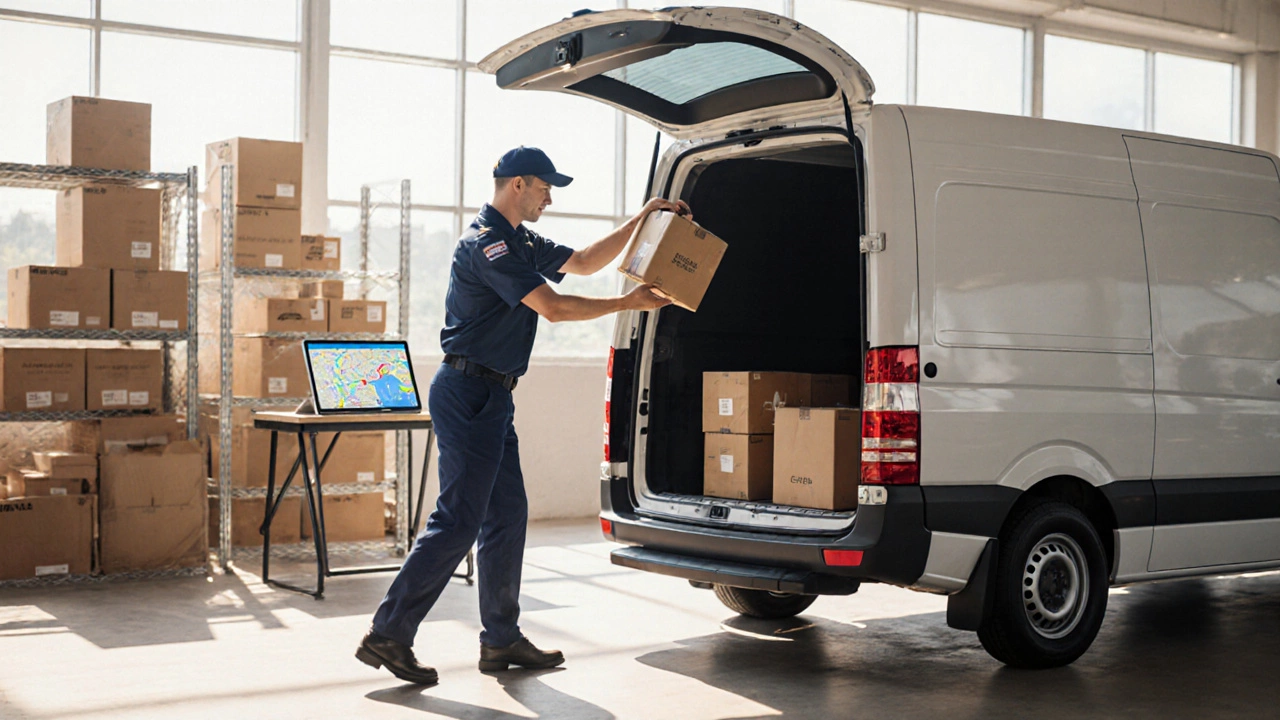Courier Reliability: Why Consistency Matters for Same‑Day Delivery
When thinking about courier reliability, the ability of a delivery service to consistently meet promised time windows while keeping parcels safe. Also known as delivery dependability, it is the backbone of any fast‑shipping operation.
Same day delivery, a service that moves a package from sender to recipient within hours on the same calendar day is the most visible test of reliability. If a courier can’t hit the promised hour, the whole promise collapses. This is why businesses pair same‑day options with tracking technology, real‑time GPS and barcode scanning that updates the parcel’s status every few minutes. The data feed lets senders see exactly where a package is, and it gives couriers a clear path to stay on schedule. In practice, courier reliability requires robust tracking technology to detect delays before they become missed deliveries.
How Logistics Networks Shape Reliability
A strong logistics network, the collection of hubs, routes, vehicles, and partners that move goods across a region sets the stage for on‑time performance. When the network is optimized—short routes, well‑placed depots, and flexible driver shifts—courier reliability improves automatically. Conversely, a fragmented network forces detours and adds idle time, hurting the promise of same‑day service. The relationship is simple: logistics network influences courier reliability, and reliable couriers reinforce the network’s reputation.
On‑time performance is the metric most customers notice. It measures the percentage of parcels delivered within the promised window. Companies that publish a 98% on‑time rate signal confidence, and that confidence translates into repeat business. However, achieving that figure isn’t just about speed; it’s about consistency. Consistency means the same level of service across every shift, weather condition, and traffic pattern. When a courier consistently meets its SLA, businesses can plan inventory, marketing, and customer communication without fearing surprise delays.
Beyond metrics, reliable couriers reduce operational costs. Fewer missed windows mean fewer rescheduling fees, lower customer service loads, and less waste of fuel from unnecessary reroutes. The cost savings feed back into the logistics network, allowing investments in better vehicles, more staff training, and upgraded tracking tools. This creates a virtuous cycle: improved resources boost reliability, and higher reliability justifies further investment.
Reliability also builds brand trust. A shopper who receives a perfect same‑day experience is likely to choose the same retailer again, even if a competitor offers a lower price. That trust is hard to buy and easy to lose—one late delivery can erase months of positive perception. For B2B clients, reliable couriers become strategic partners, handling critical parts, medical supplies, or time‑sensitive documents. In those scenarios, reliability isn’t just a nice‑to‑have; it’s a contractual requirement.
Below you’ll find a curated collection of articles that dig deeper into each of these angles—how to measure on‑time performance, what tracking tech is worth the spend, ways to design a resilient logistics network, and real‑world case studies of same‑day services that nail reliability. Whether you’re a small e‑commerce shop or a large enterprise, the insights here will help you evaluate, improve, and communicate courier reliability to your customers.
Does Express Delivery Really Work? - Pros, Cons & Real‑World Performance
A practical guide that breaks down how express delivery works, its real‑world reliability, costs, best‑use cases, and tips to avoid common pitfalls.
© 2025. All rights reserved.

